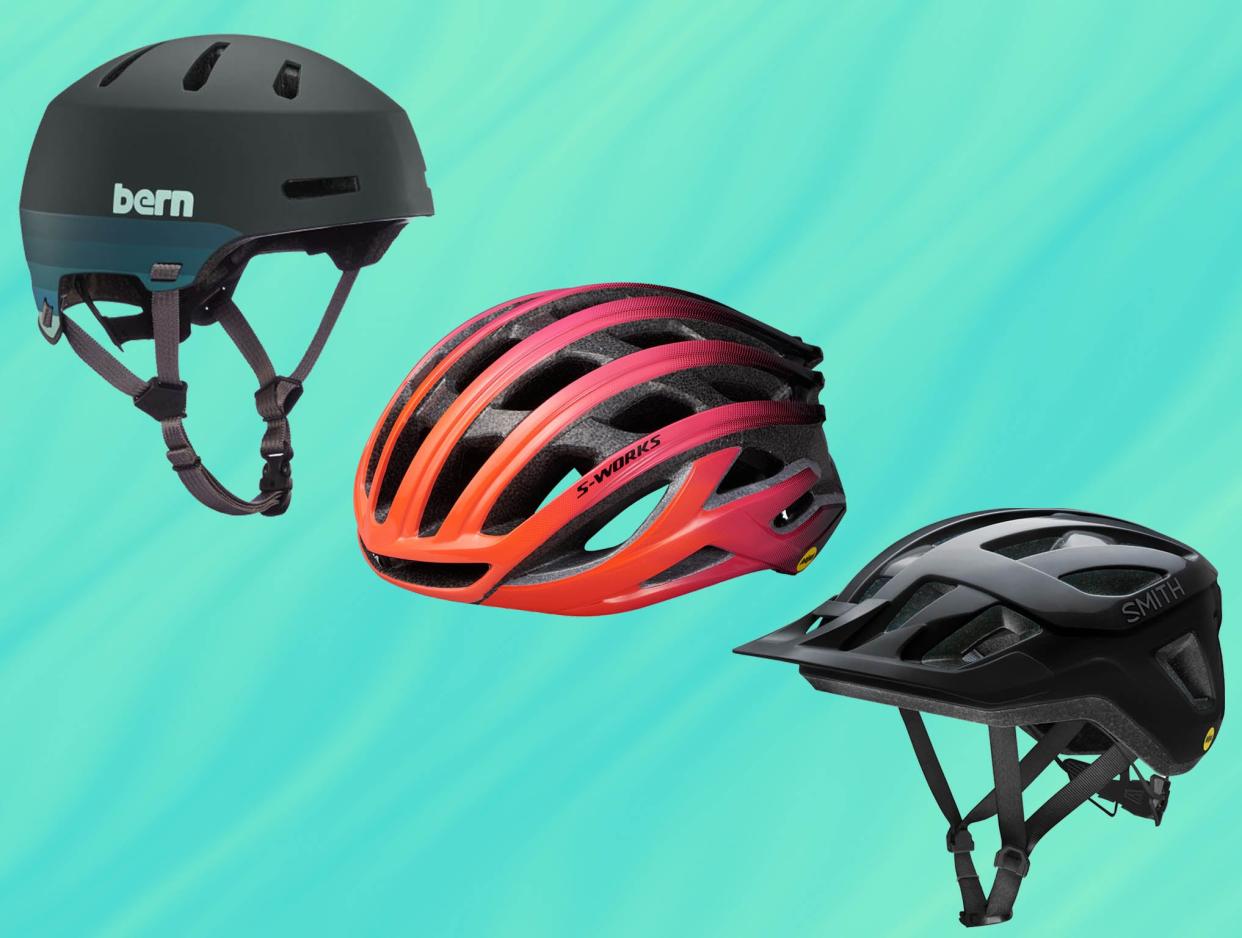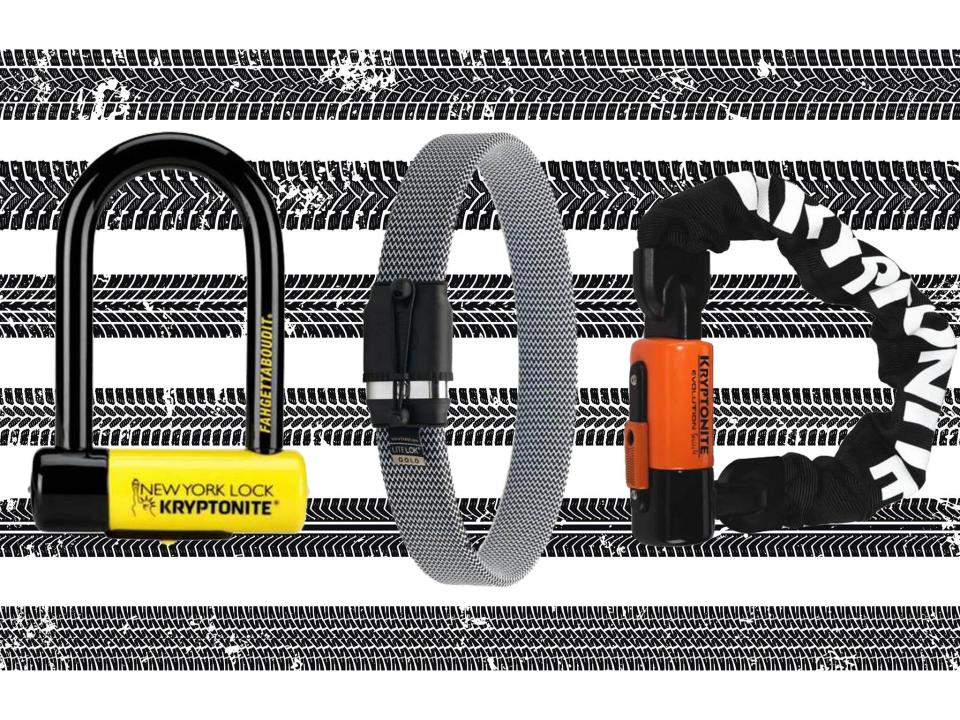Bike helmet buying guide: From measurements to protective features, here’s what you need to know

If you’re in the market for a new bike helmet, there has never been a better time to buy. There’s a huge array of styles out there aimed at a wide range of cycling disciplines.
But the golden rule is to buy a helmet you are actually going to want to wear – it’s not going to save you unless it’s on your head.
Plenty of people are dusting off old bikes and digging them out of their garden sheds right now – but doing the same with a bike helmet would be a big mistake.
The materials they are constructed from can deteriorate over time, and your lid may have suffered a knock or damage which may not be obvious to the eye but could affect its ability to protect you.
Sweat, UV light from the sun and some chemicals including those in sun cream can also degrade your helmet over time, so it’s a good idea to buy a new one at least every five years, or sooner if it has seen a lot of use.
Whatever model you buy, make sure you look out for the “BS EN 1078” marking, which will be represented with a “CE” symbol. It ensures your helmet meets the strict British and European safety requirements.
There is no need to spend a fortune on a new helmet. A £300 lid may look slick but it will not necessarily offer any more protection than a £30 one. An approved helmet should give you the same protection regardless of the price.
If you’re after the ultimate security, look out for features such as a multi-directional impact protection system (MIPS) and Koroyd.
MIPS is a thin plastic lining inside the helmet which allows the shell to shift slightly during impact, reducing any forces delivered to your head.
While Koroyd is a material that looks like drinking straws bundled together. During impact it crushes down, along with the helmet’s foam structure, again reducing impact forces.
If you are unlucky enough to be involved in a crash, always check your helmet for damage and throw it away if it has taken an impact.
You can trust our independent reviews. We may earn commission from some of the retailers, but we never allow this to influence selections. This revenue helps us to fund journalism across The Independent.
Why should you wear a bike helmet?
While it’s perfectly legal to ride without a helmet in the UK, it’s certainly not a bad idea to wear one, especially if you are the sort of rider who likes to whizz around at speed. One Australian study showed that wearing one reduced the risk of serious head injury by 69 per cent and reduced the risk of fatal head injury by 65 per cent.
Donning one in the summer will help to protect your head from the sun and can even keep you comfortable, as cleverly-designed vents direct airflow over your head, cooling it more effectively than going bare-headed.
If you choose a helmet in a bright colour such as high-vis yellow, you will also be more visible on the road. Many manufacturers incorporate reflective details and even LED lights into their designs, making them great choices for commuters.
How to measure for a bike helmet
Most helmets come in a range of sizes, from small through to extra large, and brands will give the appropriate measurements on their websites – you’ll just have to dig out a tape measure to take the circumference of your head to work out which one you need.
To fine-tune the fit, use the retention system – often a wheel at the rear or on the top of the helmet – to tighten or loosen it.
On many designs you can also tinker with the internal cage that supports the main structure of the helmet, making it sit lower or higher on the head.
If there are adjustable side buckles, open them and position them just below your ears. Then tighten the chin strap to a point where you can still fit two fingers under your chin when it is clipped together.
When set up correctly it should be tight enough to not move around when you shake your head, but it shouldn’t feel too restrictive. You should be able to move your head all the way forward with the straps still undone without it falling off.
Which bike helmet is right for you?
If you’re after a helmet for long days on the road in the summertime, you’ll need something lightweight and well ventilated. And if you’re a budding racer you’ll want it to be aerodynamic too.
For faster rides, we love Specialized’s s-works prevail (£200, Sigma Sports), as it ticks all three boxes. It tips the scales at just 265 grams, so you’ll barely notice you’re wearing it. It’s also fantastically well ventilated and very comfortable. You also get MIPS for additional protection.
If you want to hit the trails on your mountain bike, your ideal helmet will be a bit more rugged and offer extra protection at the back of the head in case you tumble backwards off your bike.
You might also need a peak to help keep the sun out of your eyes. If you don’t have a huge budget, Smith optics’ convoy (£64.99, Tredz) is a good choice as it offers the bonus of MIPS protection – something that is unusual at this price point.

If you’re looking for a helmet for commuting, there are a few more things to consider. For anyone planning to ride through the winter months, you’ll need to look for a design with fewer vents to keep the colder air out.
You’ll probably also want something fairly rugged to survive the bumps and knocks your lid will be subjected to day-to-day. Bern’s macon 2.0 (£69.99, Supereight), is super-tough and has a modern design in a huge range of colours.
If you are after a more sporty style, you could look at dhb’s bargain R2.0. At £50, it’s a real steal.
If you’re buying for children, again the golden rule applies – make sure you find a helmet they will want to wear. All the major manufacturers provide designs for youngsters, including MET Helmets, Giro and Lazer, with a brilliant range of styles.
Some look like scaled down versions of the ones worn by parents or carers, others can be adorned with anything from mohawk stripes to Batman ears.
As kids are a bit more rough and tumble than adults, make sure you regularly take a look at their helmet and check it for bumps, cracks and other damage. If you are in any doubt at all, either replace it with new one or get it professionally checked before using it again.
Where to buy a bike helmet online
Your local bike shop will have a limited stock of helmets, but online sites such as Wiggle, Merlin Cycles or Sigma Sports can hold much bigger ranges from a number of manufacturers. Make sure you read the reviews to find out what others think of the different designs, and talk to your cycling friends too, and get their advice on what works for them.
For more, visit our IndyBest cycling section for reviews on everything from bike lights to cycling bib shorts
Read More
10 best cycling bags that keep your essentials safe on the road
10 best cycling shoes that will enhance your riding performance
9 best bike locks to keep your wheels safe

